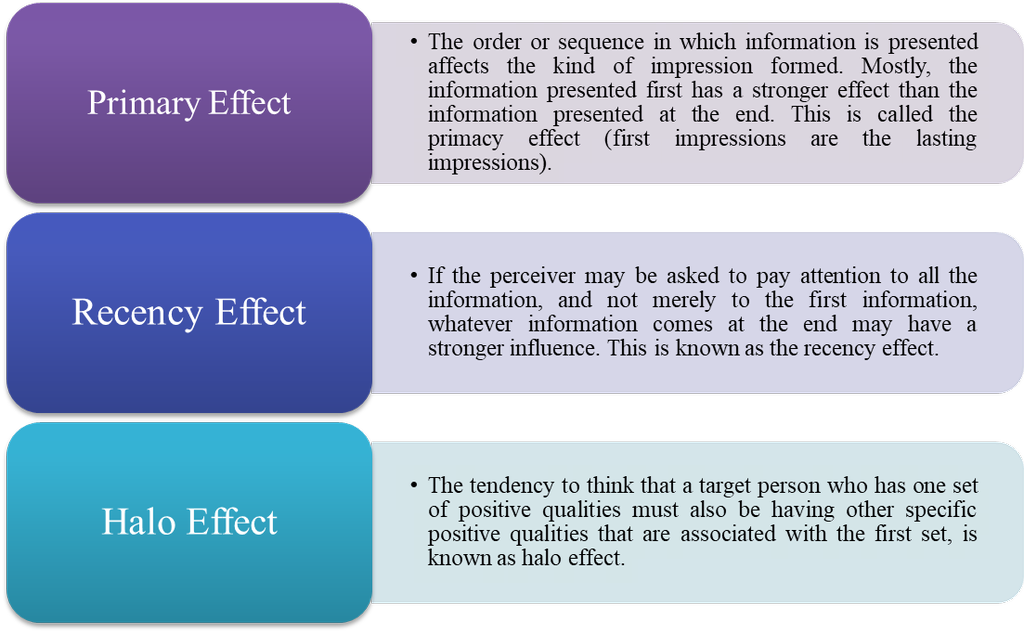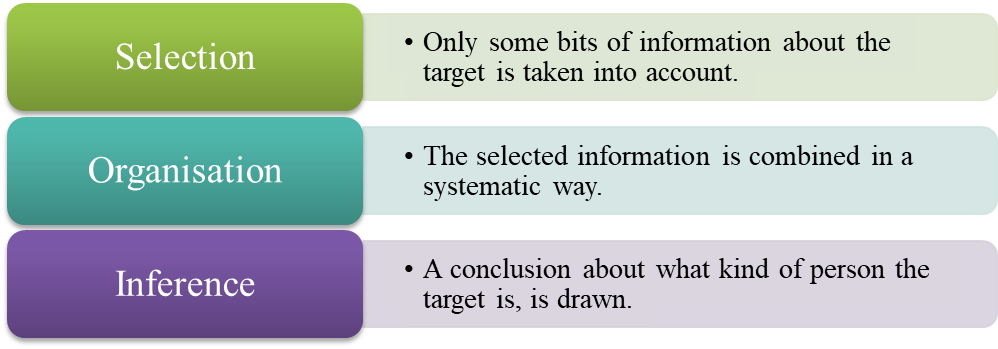- Books Name
- Psychology Book Class-12
- Publication
- PathSet Publications
- Course
- CBSE Class 12
- Subject
- Psychology
Impression Formation (process of coming to know a person)
- The person who forms the impression is called the perceiver.
- The individual about whom the impression is formed is called the target.
- The perceiver gathers information, or responds to a given information, about the qualities of the target, organises this information, and draws inferences about the target. These processes combined together form the basis of impression formation.
- Impression formation is influenced by :
- the nature of information available to the perceiver
- social schemas in the perceiver (including stereotypes)
- personality characteristics of the perceiver
- situational factors
- Some specific qualities influence impression formation more than other traits do.
Three effects associated with impression formation:

- The process of impression formation consists of the following three sub-processes:

Attribution of Causality (process of coming to know a person)
- In attribution, the perceiver goes further from impression formation and explains why the target behaved in a particular way.
- Attaching or assigning a cause for the target’s behaviour is the main idea in attribution.
- It is a systematic process.
- Attribution is influenced by :
- the nature of information available to the perceiver
- social schemas in the perceiver (including stereotypes)
- personality characteristics of the perceiver
- situational factors
- The cause of the target’s behaviour can be broadly classified as being:
- Internal (something within the person – personality related cause)
- External (something outside the person – situational cause)
- The causes of success and failure can be classified into (by Bernard Wiener):
- Internal and External
- Stable (causes that dont change with time) & Unstable (causes that change with time)

Fundamental Attribution Error
In making attributions, there is an overall tendency for people to give greater weightage to internal or dispositional factors, than to external or situational factors.
This tendency is stronger in some cultures than it is in others. For instance, Indians tend to make more external (situational) attributions than Americans do.
- There is a difference between the attribution made for success, and the attribution made for failure.
In general, people attribute success to internal factors, such as their ability or hard work.
They attribute failure to external factors, such as bad luck, the difficulty of the task, and so on.
Actor-Observer Effect
There is a distinction between the attribution that a person makes for her/ his own positive and negative experiences (actor-role), and the attribution made for another person’s positive and negative experiences (observer-role).
The basic reason for the difference between the actor and observer roles is that people want to have a nice image of themselves, as compared to others.
For example,
- Actor-role, internal attribution for a positive experience
If you yourself get good marks in a test, you will attribute it to your own ability or hard work.
- Actor-role, external attribution for a negative experience
If you get bad marks, you will say that this was because you were unlucky or that the test was too difficult.
- Observer-role, internal attribution for a negative experience
If your classmate gets bad marks, you are likely to say that her/his failure was because of low ability or lack of effort.
- Observer-role, external attribution for a positive experience
If your classmate gets good marks in the test, you will attribute her/his success to good luck or an easy test.

 PathSet Publications
PathSet Publications
